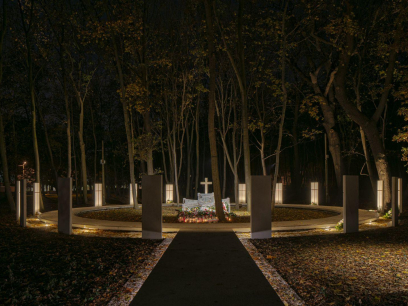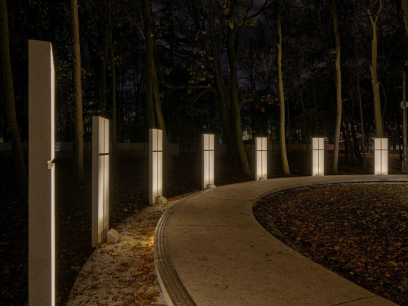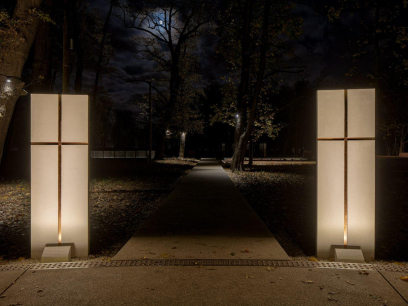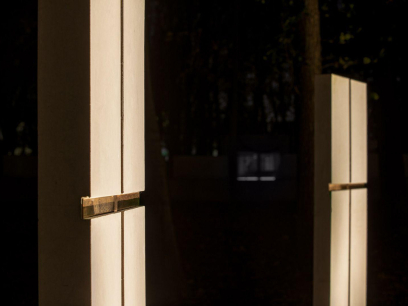POLISH SOLDIERS CEMETERY IN WESTERPLATTE - IMPLEMENTATION
ARCHITECTURE: NM ARCHITEKCI
2022 GDAŃSK
The Westerplatte peninsula is a name that every Pole knows. It was here that the first battle of the Second World War took place. On 1 September 1939, at 4:48 a.m., the German battleship Schleswig-Holstein began shelling the small Polish Army unit stationed here. The heroic defence of the peninsula against the onslaught of the German infantry, navy and air force lasted 7 days, and in view of the great losses among the defenders, ended with Major Henryk Sucharski's decision to surrender.
Shortly after the war, a symbolic cemetery for the fallen defenders of Westerplatte was created on the peninsula, and in 2022 the necropolis was rebuilt and modernised. According to the new design, the foundations of the demolished buildings became the gateway leading to the new burial site for soldiers. The slender tombstones are clustered around a monument to the Order of Virtuti Militari - the highest Polish military decoration with which all fallen soldiers were honoured.
An important element of the new cemetery design is its illumination, which brings the names of the fallen out of the gloom and introduces a symbolic boundary between the illuminated circle of gravestones and the dark forest around - as if between life and death. Carefully selected and directed light sources, invisible to visitors, illuminate only what is most important here, enhancing the mood of concentration and melancholy.
Subtle changes in light intensity shift the visitors' attention to the successive tombstones, so that each soldier becomes, for a few moments, that most important defender of Westerplatte. The changes in lighting take place very slowly so as not to disturb the atmosphere of concentration in the cemetery.
The shadows of the leaves on the stone slabs evoke yet another witness to those events - the forest, which gave shelter to the defenders for many days and which suffered almost as much as they did. The sources of this illumination are luminaires installed to the branches of the trees by means of special flexible strips that do not injure the trees.
The project received the prestigious Award of Excellence from International Association of Lighting Designers (IALD) and Award of Merit from Illuminating Engineering Society
 |
 |
Principles of data processing
Concerning form data sent from the website.
The data from the above form will be processed by our company only for the purpose of responding to contact within the period necessary to process the submitted case. Providing data is voluntary, but necessary to process the inquiry. Every person has the right to access their data, rectify and delete it, and the right to object to inappropriate processing. In the event of unlawful processing, everyone has the right to lodge a complaint with the supervisory authority. The administrator of personal data is Qlab, registered office: 40-058 Katowice, UL. Marii Skłodowskiej-Curie 30/5.






